AMBER
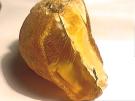

 Characteristics of the mineral.
Characteristics of the mineral.
A great defender and guardian not only from illnesses, but also from a variety of troubles. It can be very arbitrarily called a stone, since it is the frozen resin of prehistoric coniferous trees, which is not one thousand years old. Along with the diver, the mammoth tusk, amolite, amber refers to fossil organogenic minerals.
The age of the most famous Baltic amber in the world is 35 million years old, but there are amber plants over 100 million years old. Among the jewelers, transparent amber is appreciated without inclusions of air bubbles or water. The color of amber can be from clear to milky, from light golden and yellow to practically black. Succinic acid is a biologically active and curative substance. You can get it at home by insisting alcohol or vodka on fine amber until light yellowing of the solution. Amber is very soft and crumbles easily, it is difficult to cut it. Unlike synthetic or epoxy substitutes, amber is very light, it does not sink in a saturated solution of table salt. If you touch the amber with a red-hot awl, there will be a pleasant smell of rosin and incense. For insertions in precious products, the ideal quality is compressed amber. Most often, amber is forged with plastic, and these imitations are very successful, before it was successfully forged with epoxy resins.
Amber has been known to people for a long time. In burials and parking lots of ancient people belonging to the late Neolithic Paleolithic era, amulets, beads, plates and pieces of raw amber were often found in the Baltic, Ukraine and the Mediterranean. Workshops for the processing of amber are known from the late Neolithic - the beginning of the Bronze Age. Amber fisheries existed, probably, on the coast of the Dnieper. They gave material for the workshops, which were mostly in Kiev. The new heyday of the art of processing amber dates back to the mid-1940s. XX century. There were whole art trends and schools.
The most popular and popular is the Baltic amber - succinite. Amber was formed during the evolution of the vegetative cover of the Earth. Sharp warming caused increased resinification of ambergrass coniferous plants. The expiration of the oleoresin was very intense and repeated. In a hot climate, the surface of the gum has changed, the viscosity decreased due to the evaporation of terpenes, self-oxidation of resin acids occurred. This first stage - the stage of hardening of the gum and increasing its density - lasted hundreds of years. The second stage consisted in a gradual change in the primary composition and properties of substances and intensive decomposition in the warm and humid climate of dead wood and the removal of its soluble parts by water. Gradually the process of fossilization faded, and the gum was covered with younger deposits. Thus, the primary deposits of primary amber emerged.
A large deposit was also discovered on the territory of the Rivne region of Ukraine, although amber finds in the area were known for a long time. The distribution of amber in the deposit is uneven. The reserves of amber are considerable. This is much more ancient amber than the Baltic (60-75 million years). By its composition and number of properties, Ukrainian amber differs little from the Baltic.
In terms of transparency, amber is distinguished by a transparent, translucent, opaque or translucent in thin cleavages. Often in amber there are inclusions of plants, arthropods of arachnids (insects, haymores, spiders and ticks) and insects (small species of Diptera and primitive wingless insects), etc. Amber color is golden- or honey-yellow, orange, reddish-brown, sometimes black , White (bone and foamy amber), blue and banded (laminated). Only a small part of the extracted amber is suitable for making jewelry. Fine amber, accounting for 90% of the total production, goes for processing: uncontaminated - for pressing, the rest - for chemical processing (by the method of dry distillation). Pressed amber, or amberoid, along with natural amber is widely used in the jewelry and stone-cutting industry. The basis of the process is the feature of amber becoming plastic when heated to 140-200 o C without air access. A number of methods for manufacturing pressed amber are known.
To obtain more transparent or lighter amber varieties, heat treatment in an autoclave is used followed by cooling. In this way, the most expensive sparkling amber is obtained. Similar amber, containing small fan-shaped cracks, creating an additional game of stone, is considered the most valuable and inserted into gold products.

 Magic properties of stones.
Magic properties of stones.
Amber is called the magic resin of the ancient forest. Great and magical pieces of amber were considered, in which in those distant times there were insects, twigs, leaves, etc. The magicians used them in sticks and sacred objects. A talisman of inconsolable people, who suffered a grief: it helps the owner to get rid of heavy memories, consoles him and makes a new life after a series of failures and grief. Amber clears the atmosphere, energizes it, fills it with light and gives hope. This is a very powerful and mysterious stone, and its properties are far from completely explored.
Amber becomes a talisman of people who are trying to establish links with the past, historians, archaeologists, anthropologists and high-level teachers. He helps a person to establish the connection of times, to connect and synthesize the full picture, draw the right conclusions, give the ability to accurately predict events. Amber - a guard against evil spirits, all kinds of undead and evil spirits, enemies, ill-wishers and persecutors. The stone is an amulet of lightning and fires, it helps travelers, delivering a good shelter, and in sea travel takes care of the unsinkability of ships. It has universal properties to cleanse both space and soul and body (Ukrainian anthem - "We will put our soul and body for our freedom, and we will prove that we are brothers - Cossack family").

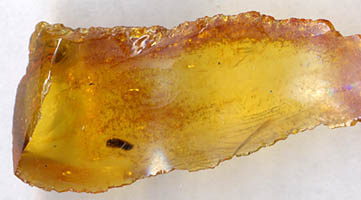
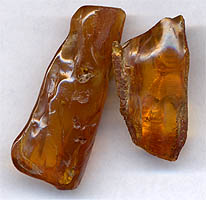
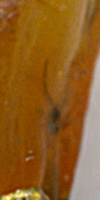
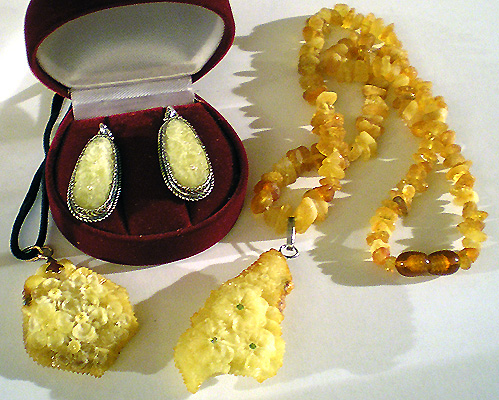
Poisonous and radioactive dangerous stones and minerals
** - poisonous stones and minerals (mandatory check in the chemical laboratory + explicit indication of toxicity).
** - radioactive stones and minerals (mandatory check on the standard dosimeter + ban on open sales in the case of radioactivity over 24 milli / g / h + additional measures of population protection).
All rare stones are subject to mandatory inspection at the standard dosimeter for the permissible level of radiation and in the chemical laboratory for the absence of poisonous and evaporating components that are dangerous to humans and the environment.


Comments
When commenting on, remember that the content and tone of your message can hurt the feelings of real people, show respect and tolerance to your interlocutors even if you do not share their opinion, your behavior in the conditions of freedom of expression and anonymity provided by the Internet, changes Not only virtual, but also the real world. All comments are hidden from the index, spam is controlled.